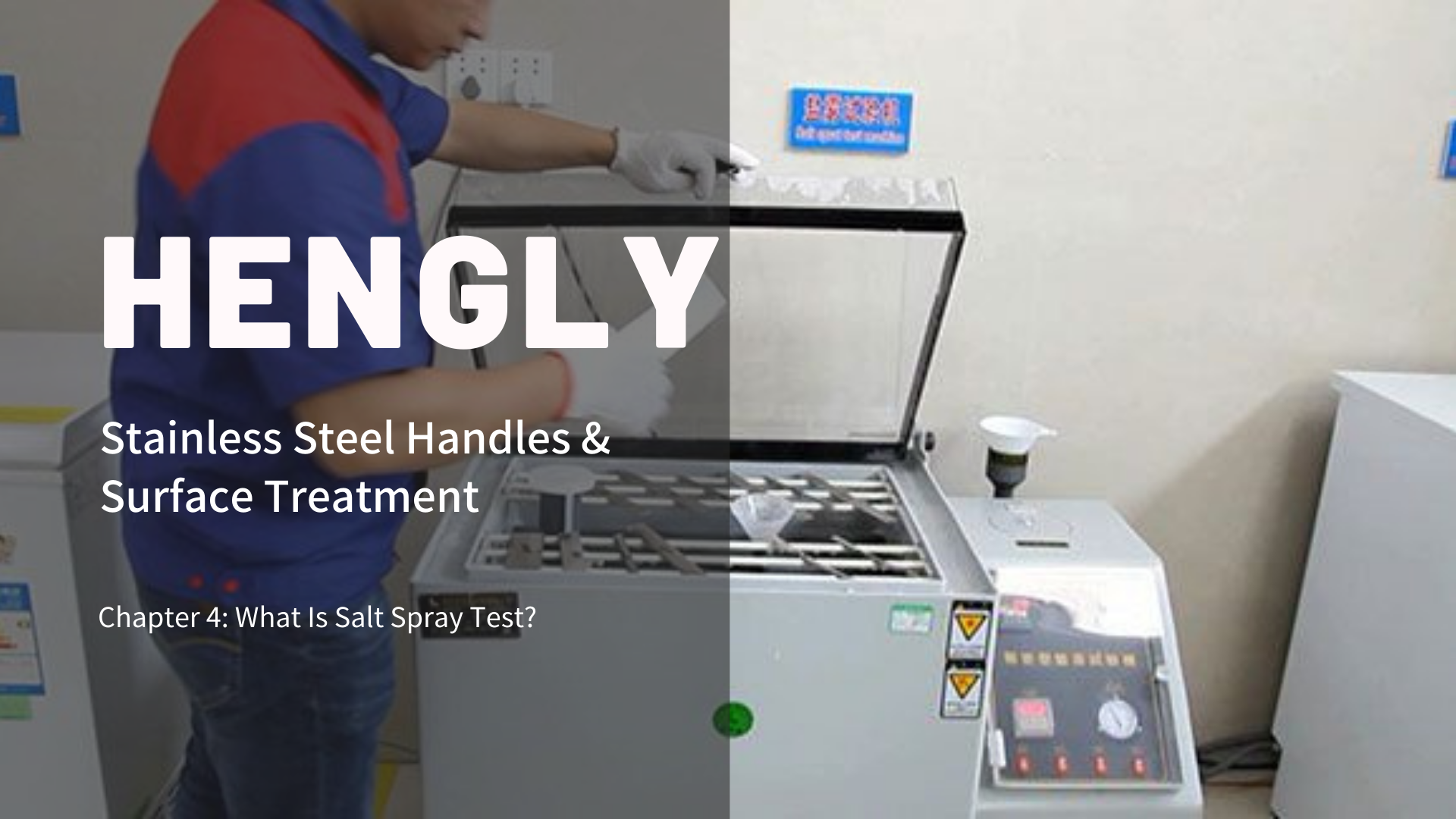Chapter 4: What Is Salt Spray Test?

Salt spray testing is a technique of checking the corrosion resistance of stainless steel, coatings, and other materials in handles. The coatings are utilized to offer maximum protection for the metal. However, there will be an accelerated corrosive attack during salt spray testing to predict how well the finish protects the metal.
One of the main objectives of the test is to assess the life of the surface coating.
Effectiveness
Stainless steel spray testing is used to produce reliable comparisons between expected and actual corrosion resistance. There is a weak correlation between the surface coating’s duration in the spray test and its expected life in reality. That is because there are external factors that greatly influence corrosion.
Spray test is not a simple process. That usually happens in hot-dip galvanized steel because the drying cycles are a vital factor to take into account for durability.
For this reason, the method works best when used on samples to identify a pass or fail grade. Whatever the result, it will be then compared to the expectations in an audit role. It is used on zinc, zinc-alloy plating, phosphate surfaces, copper, chromium, paint coatings, electroplated tin, nickel, stainless steel, and a lot more.
Why there’s a need to use it?
Over the years, the stainless steel spray test has been the standardized corrosion test technique. Being a quick, inexpensive, and repeatable technique, no wonder why it has been employed as a surface treatment. The first international test was dated back to 1939. Today, the ASTMB117 is the most popular salt spray test across the globe. It is also standardized through various certifications like the ISO 9227.
How does it work?
Stainless steel spray test is conducted in a closed and quality testing chamber to ensure treatment accuracy. Strong saltwater is applied to a solution thru a spray nozzle. The saltwater fog is utilized to imitate a highly corrosive environment. After a long period, the appearance of oxides is assessed.
The more corrosion-resistant a stainless steel handle is, the longer it takes for oxides to come out. The testing duration can last from eight to twenty hours to complete. But this only happens when the material is phosphate steel. For zinc-nickel coatings, it takes place within 720 hours. For zinc flake surface coatings, it will require 1,000 hours.
Types of salt spray testing
A neutral salt spray test with a 5% NaCl solution is used for any steel-based materials. It has a neutral PH level of at least 6.5 or 7.2. When it comes to decorative coatings such as anodized aluminum, electroplated copper nickel-chromium, and electroplated copper-nickel are tested with a strong solution of acetic acid with copper chloride (CASS) or acetic acid (ASS). These have a PH from 3.1 to 3.3.
The results of a coating or material’s resistance to corrosion in a spray test can help you determine whether a specific stainless steel handle is resilient, durable, or long-lasting enough for all your needs. It will also let you know how durable and how long it can last and perform its function.
Other amazing uses
Here are the other coatings that can be assessed through the use of salt spray test:
· Phosphate surfaces (These are pre-treated surfaces with subsequent rust, paint, and lacquer.)
· Zinc allow plating
· Electroplated nickel, tin, chromium, and copper
· Coatings that are not applied electrolytically (It includes zinc flake coatings.)
· Organic coatings (i.e., rust preventives)
· Paint coating
Hot-dip galvanized surfaces are not evaluated in a salt spray test. When exposed to a harsh environment, it produces zinc carbonates. As a result, it protects the coating metal and eliminates the high rate of corrosion. When a hot-dip galvanized sample is exposed to a salt spray fog, there will be no presence of zinc carbonates.
With that, the testing method does not provide a reliable measurement of corrosion protection. For more information about the guidelines about the right measurement of corrosion resistance for hot-dip galvanized surfaces, check out the official website of the ISO 9223.
